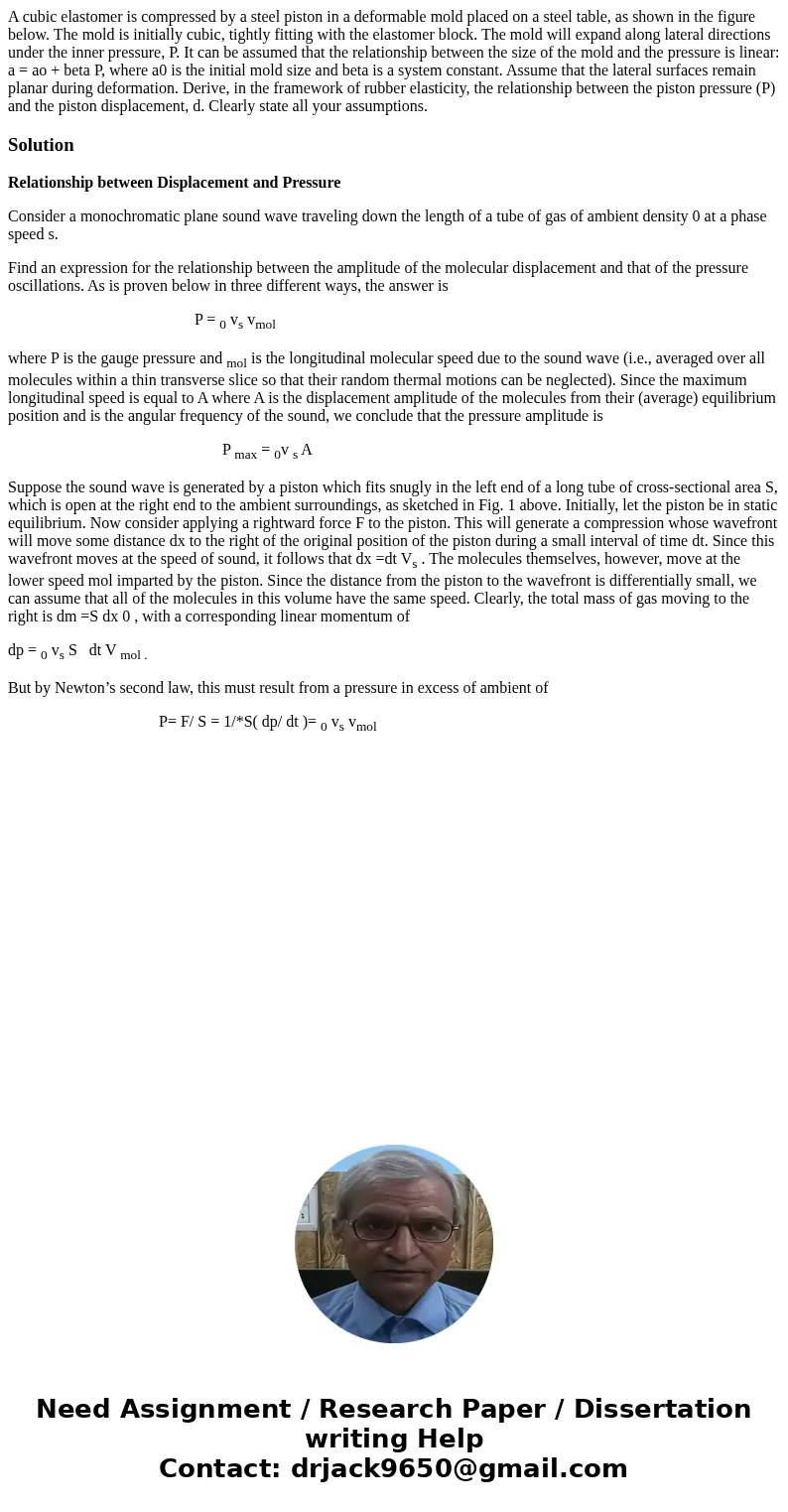A cubic elastomer is compressed by a steel piston in a defor
Solution
Relationship between Displacement and Pressure
Consider a monochromatic plane sound wave traveling down the length of a tube of gas of ambient density 0 at a phase speed s.
Find an expression for the relationship between the amplitude of the molecular displacement and that of the pressure oscillations. As is proven below in three different ways, the answer is
P = 0 vs vmol
where P is the gauge pressure and mol is the longitudinal molecular speed due to the sound wave (i.e., averaged over all molecules within a thin transverse slice so that their random thermal motions can be neglected). Since the maximum longitudinal speed is equal to A where A is the displacement amplitude of the molecules from their (average) equilibrium position and is the angular frequency of the sound, we conclude that the pressure amplitude is
P max = 0v s A
Suppose the sound wave is generated by a piston which fits snugly in the left end of a long tube of cross-sectional area S, which is open at the right end to the ambient surroundings, as sketched in Fig. 1 above. Initially, let the piston be in static equilibrium. Now consider applying a rightward force F to the piston. This will generate a compression whose wavefront will move some distance dx to the right of the original position of the piston during a small interval of time dt. Since this wavefront moves at the speed of sound, it follows that dx =dt Vs . The molecules themselves, however, move at the lower speed mol imparted by the piston. Since the distance from the piston to the wavefront is differentially small, we can assume that all of the molecules in this volume have the same speed. Clearly, the total mass of gas moving to the right is dm =S dx 0 , with a corresponding linear momentum of
dp = 0 vs S dt V mol .
But by Newton’s second law, this must result from a pressure in excess of ambient of
P= F/ S = 1/*S( dp/ dt )= 0 vs vmol

 Homework Sourse
Homework Sourse